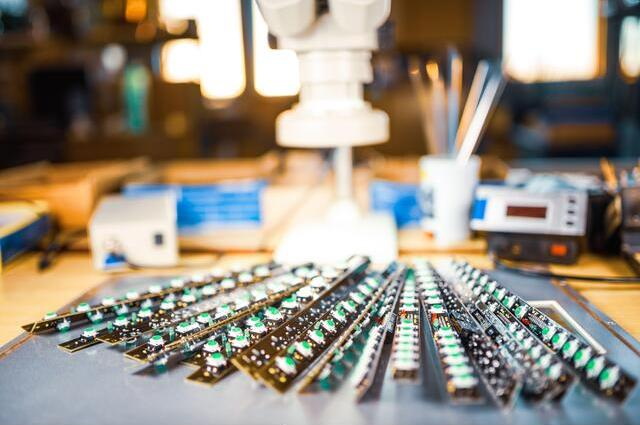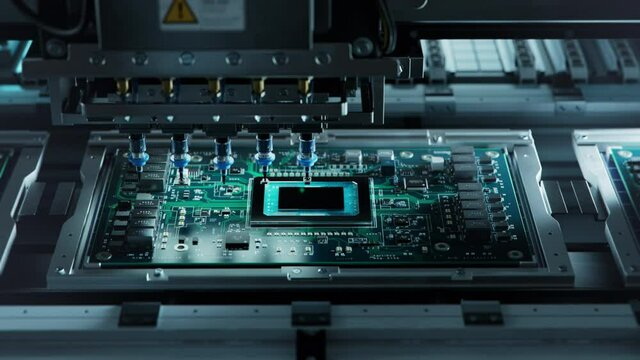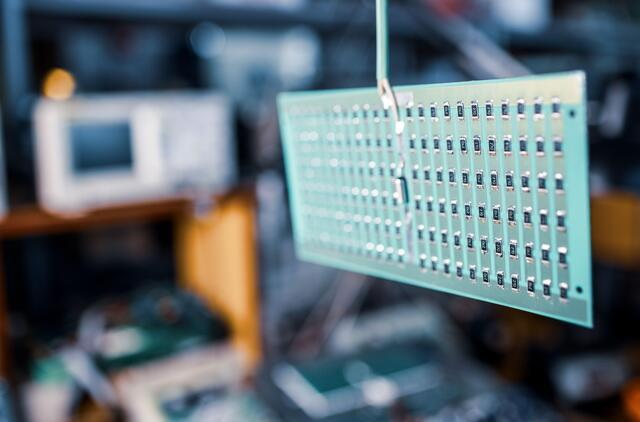Content Menu
● Understanding the Components of an SMT Production Line
● Key Considerations for SMT Line Layout
● Best Practices for Optimizing SMT Line Layout
● The Role of Ergonomics in SMT Line Layout
● Material Handling in SMT Production Lines
● Continuous Improvement Strategies
● Advanced Technologies Enhancing SMT Lines
● Case Studies: Successful SMT Layout Implementations
● Conclusion
● FAQ
>> 1. What is an SMT production line?
>> 2. Why is the layout of an SMT line important?
>> 3. What are the key components of an SMT line?
>> 4. How can automation improve SMT line efficiency?
>> 5. What are some best practices for optimizing an SMT line layout?
● Citations:
In the fast-paced world of electronics manufacturing, Surface Mount Technology (SMT) production lines are essential for assembling high-quality electronic devices. The layout of an SMT production line significantly influences efficiency, productivity, and product quality. This article explores the best practices, considerations, and strategies for designing an optimal SMT production line layout, ensuring that manufacturers can maximize throughput while minimizing downtime.

Understanding the Components of an SMT Production Line
An SMT production line typically consists of several key components, including:
- Screen Printers: For applying solder paste to printed circuit boards (PCBs).
- Pick-and-Place Machines: For accurately placing components onto PCBs.
- Reflow Ovens: For soldering components to the PCB.
- Inspection Systems: For quality control, including Automated Optical Inspection (AOI) and X-ray inspection.
Each component plays a vital role in ensuring the smooth operation and high quality of the assembly process.
Key Considerations for SMT Line Layout
Designing an effective SMT line layout requires careful consideration of various factors:
1. Material Flow: Ensure a logical sequence of machines to minimize PCB movement and reduce the risk of damage. A well-planned flow prevents bottlenecks and delays, allowing for a smooth transition between different stages of production.
2. Space Utilization: Optimize floor space while allowing room for operator movement and future expansion. Adequate spacing between machines is also essential to facilitate easy maintenance and troubleshooting.
3. Ergonomics and Safety: Design workstations for operator comfort and implement safety measures like proper lighting, ventilation, and emergency exits. Ergonomic design can significantly reduce operator fatigue and enhance productivity.
4. Automation: Integrate automated systems to enhance efficiency and accuracy. Automation can include inline inspection systems that monitor quality as PCBs move through the line, reducing the need for manual checks.
5. Continuous Improvement: Regularly review and optimize the layout using lean manufacturing principles to eliminate waste and improve workflows.
Best Practices for Optimizing SMT Line Layout
To achieve an efficient SMT production line, consider implementing the following best practices:
- Simulation Tools: Use virtual models to test different layout configurations before finalizing the design. This allows manufacturers to foresee potential issues and make necessary adjustments.
- Lean Manufacturing Principles: Apply techniques like 5S (Sort, Set in order, Shine, Standardize, Sustain) and value stream mapping to identify waste and streamline processes.
- Training Programs: Invest in workforce training to ensure operators are skilled in handling advanced equipment and understand the layout's flow. Continuous training helps maintain high standards of quality and efficiency.
- Regular Maintenance: Schedule inspections to prevent downtime and maintain efficiency. A well-maintained machine is crucial for consistent production quality.
The Role of Ergonomics in SMT Line Layout
Ergonomics is essential in designing a productive SMT line. Workstations should be designed with operator comfort in mind to reduce fatigue and increase efficiency.
- Accessibility: Ensure that all machines are easily accessible for operators without requiring excessive bending or stretching. This includes positioning controls within easy reach.
- Safety Measures: Implement safety protocols such as emergency stops, proper ventilation, and noise control measures to create a comfortable working environment.
Material Handling in SMT Production Lines
Efficient material handling is critical for maintaining a smooth SMT production line setup.
- Just-in-Time Inventory: Implementing a just-in-time (JIT) inventory system can help reduce waste by ensuring materials are available when needed without excess stock.
- Automated Material Handling Systems: Consider using conveyors and feeders to streamline the process and reduce manual handling errors. Automated guided vehicles (AGVs) can also transport materials efficiently between stations.

Continuous Improvement Strategies
The design of an SMT line is not static; it requires ongoing evaluation and improvement.
- Feedback Loops: Regularly gather feedback from operators and maintenance personnel to identify pain points in the layout. This feedback is invaluable for making iterative improvements.
- Performance Metrics: Use key performance indicators (KPIs) to measure efficiency, quality, and throughput regularly. Analyzing these metrics helps identify trends that may require attention.
- Adaptation to Changes: Be prepared to adapt the layout as production needs change or new technologies emerge. Flexibility in design allows manufacturers to respond quickly to market demands.
Advanced Technologies Enhancing SMT Lines
With rapid advancements in technology, integrating modern solutions into SMT lines can significantly enhance performance:
- High-Speed Placement Machines: Investing in high-speed placement machines can dramatically increase output rates by mounting components faster than conventional machines while maintaining accuracy[5].
- Inline Inspection Systems: Implementing inline inspection systems allows real-time monitoring of PCBs as they exit machines, catching defects early in the process[4].
- Data Analytics Tools: Utilizing data analytics can help manufacturers identify bottlenecks in real time, enabling quick adjustments that improve overall efficiency[9].
Case Studies: Successful SMT Layout Implementations
Examining successful implementations can provide valuable insights into effective SMT layouts:
1. Automotive Electronics Manufacturer: A leading automotive electronics manufacturer redesigned its SMT line by adopting lean principles. By optimizing machine placement based on workflow analysis, they reduced cycle time by 30% while increasing output by 20%.
2. Consumer Electronics Company: A consumer electronics company integrated advanced automation into their SMT line, including AGVs for material transport. This change minimized manual handling errors and improved overall production speed by 25%.
3. Medical Device Manufacturer: A medical device manufacturer focused on ergonomics when redesigning their SMT line layout. By creating accessible workstations with proper lighting and ventilation, they reduced operator fatigue significantly, leading to a 15% increase in productivity.
Conclusion
Designing the best layout for an SMT production line is a dynamic process that requires careful planning, execution, and continuous improvement. By focusing on material flow, space utilization, ergonomics, automation, and regular maintenance, manufacturers can achieve a highly efficient and productive SMT line. The integration of lean manufacturing principles and advanced technologies further enhances performance, ensuring the production of high-quality electronic devices that meet market demands effectively.

FAQ
1. What is an SMT production line?
An SMT production line is a sequence of machines and processes used to assemble electronic components onto printed circuit boards (PCBs) using surface mount technology.
2. Why is the layout of an SMT line important?
The layout impacts efficiency, productivity, and product quality by ensuring smooth material flow and minimizing bottlenecks during production processes.
3. What are the key components of an SMT line?
Key components include screen printers for solder paste application, pick-and-place machines for component placement, reflow ovens for soldering, and inspection systems for quality control.
4. How can automation improve SMT line efficiency?
Automation reduces manual errors by enhancing accuracy through real-time monitoring while providing data analytics that inform continuous improvement efforts across the production process.
5. What are some best practices for optimizing an SMT line layout?
Best practices include using simulation tools before finalizing designs, applying lean manufacturing principles like 5S to eliminate waste, investing in operator training programs, ensuring regular maintenance schedules are adhered to consistently.
Citations:
[1] https://www.smtfactory.com/Strategic-SMT-Production-Line-Layout-Design-id40117676.html
[2] https://www.electronicspecifier.com/news/surface-mount-technology-best-practice-guide
[3] https://www.smtfactory.com/Essential-Steps-for-SMT-Production-Line-Setup-id49117676.html
[4] https://www.adoptsmt.com/en/efficiency-enhancement-in-smt-manufacturing/
[5] https://www.zjyingxing.com/info/what-are-the-ways-to-improve-the-efficiency-of-88896111.html
[6] https://www.smtfactory.com/Perfecting-Your-SMT-Line-Layout-for-Efficiency-id47017676.html
[7] https://faroads.com/start-smt-line-guide-2024/
[8] https://www.sunzontech.com/how-to-choose-smt-production-line-configuration-scheme/
[9] https://txjpcb.com/the-best-practices-for-smt-line-balancing-and-optimization/
[10] https://blog.matric.com/smt-production-for-pcbs-matric




















